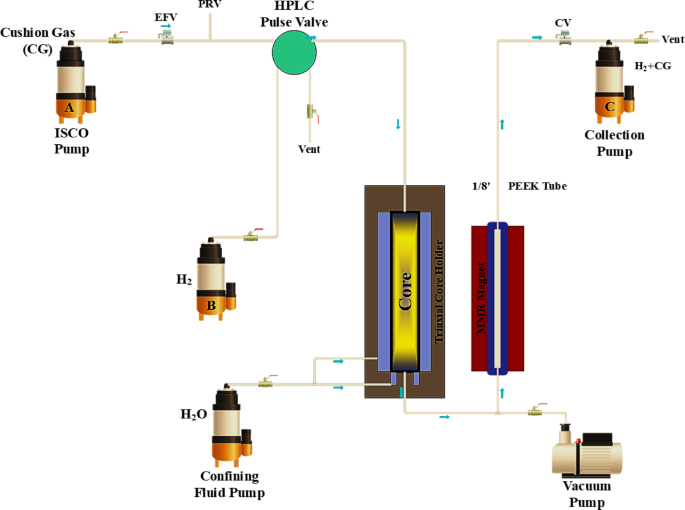Enhancing Energy Storage Efficiency: Exploring the Role of Cushion Gases in Underground Hydrogen Storage
Key Ideas
- Cushion gases are crucial for maintaining reservoir stability and efficiency in underground hydrogen storage systems, impacting gas transfer and storage efficiency.
- The dispersion coefficient between hydrogen and cushion gases is essential in predicting gas mixing behavior within the reservoir, influencing extraction efficiency and storage optimization.
- Research on measuring dispersion coefficients in rock cores under realistic storage conditions is advancing the understanding of gas mixing dynamics and aiding in the selection of suitable cushion gases.
- Optimizing gas selection and operational processes based on dispersion coefficient analysis can lead to more efficient reservoir designs and reduced environmental impacts in large-scale energy storage applications.
The article discusses the importance of cushion gases in underground hydrogen storage systems, emphasizing their role in enhancing reservoir stability and efficiency. It explores the concept of the dispersion coefficient and its significance in predicting gas distribution within porous media, particularly when interacting with cushion gases. The global shift towards renewable energy necessitates reliable energy storage technologies, with hydrogen emerging as a promising solution for large-scale storage. Underground hydrogen storage in geological formations offers vast capacities, with cushion gases like nitrogen, methane, and carbon dioxide playing a vital role in maintaining minimum pressure and regulating volume during storage processes. Understanding the interactions between hydrogen and cushion gases is crucial to prevent contamination and optimize storage efficiency.
The article highlights challenges in accurately modeling underground hydrogen storage systems, particularly the lack of reliable data on dispersion coefficients under realistic conditions. Recent studies have focused on measuring dispersion coefficients in rock cores to improve the design and simulation of storage systems. Environmental factors and cushion gas properties significantly influence the dispersion coefficient, which can be determined through experimental methods and numerical simulations. Despite the operational costs and environmental impacts associated with cushion gases, optimizing gas selection based on the dispersion coefficient analysis can lead to more efficient reservoir designs and sustainable energy storage solutions.
The article calls for further research to refine models and solutions for optimizing gas dispersion in underground storage systems. It suggests that artificial neural network models could be beneficial for predicting hydrogen diffusion in cushion gases, advocating for transparent and interpretable modeling techniques for enhanced efficiency and sustainability.
Topics
Power
Renewable Energy
Energy Storage
Environmental Sustainability
Geological Formations
Reservoir Stability
Dispersion Coefficient
Cushion Gases
Reservoir Simulations
Latest News
